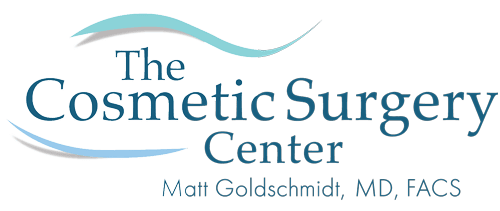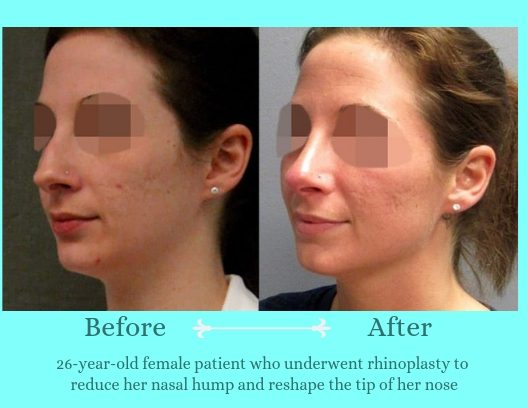Rhinoplasty (also known as a “nose job” or “nose surgery”) is designed to reshape the nose and give it a more aesthetically pleasing appearance. This surgical procedure can make the nose larger or smaller; change the angle of the nose in relation to the upper lip; alter the tip of the nose; or correct bumps, indentations, or other nasal defects. Utilizing various intricate rhinoplasty techniques, Dr. Matt Goldschmidt can make the nose more proportionate with the rest of the face. If you are considering undergoing rhinoplasty, you can benefit from understanding the process and what to expect during your cosmetic journey.

The Day of Your Rhinoplasty Procedure
On the day of surgery, you will go to the surgery center where the procedure is performed. There, you will be checked in by the nursing staff. This process consists of the following:
- You must fill out several forms that ask for an emergency contact number, current information, and any new pertinent medical information.
- A member of the medical team will confirm that you have a driver with you.
- You will also have to sign a form indicating that you understand and accept the risks of the procedure if you have not already done so before your appointment.
- You will then be asked to change into a gown, go to the bathroom, and remove any small items you may be wearing (i.e., contact lenses, dentures, jewelry).
- You will meet with Dr. Goldschmidt before the surgery begins and he will go over the details of the procedure once again with you.
What to Expect Before Surgery Begins
After this process, the nursing staff will insert an IV, through which antibiotics are administered. Once in the operating room, the staff will prepare you for surgery. The anesthesia team will then administer medications to relax you and put you to sleep. As you drift off, the anesthesia doctor may ask how you are feeling to provide them with additional feedback about how the anesthesia is working. The surgical team will then cleanse your skin with antibacterial solutions and place sterile drapes and towels around your face to also help prevent infection.
How Rhinoplasty Works
Most patients prefer general anesthesia, but some may elect to have a “twilight sedation” or intravenous sedation. During the rhinoplasty surgery, incisions are made to access the bones and cartilage that support the nose. The incisions are created inside the nose so that they are invisible after the surgery. Sometimes, it is necessary to make a tiny incision underneath the nose as well. Depending on the desired result, some bone and cartilage may be removed, or tissue may be added (either from another body part or synthetic filler). The bones may need to be shifted in a very controlled fashion to make your nose narrower. After reshaping the bones and cartilage, the skin is then redraped over the underlying structures of the nose. A splint is then placed outside the nose to support the new shape of the nose as it heals.
The Recovery Process
Patients generally do not need to stay overnight after the procedure, and they usually go home a few hours afterward. Rhinoplasty surgeries can change the size, shape, and angle of your nose and bring it into better proportion with the rest of your face. Rhinoplasty will give you a refined, more aesthetic appearance that will complement the rest of your face.
Rhinoplasty Results
Rhinoplasty delivers long-lasting improvements to the aesthetic appearance of the nose. Results are intended to be permanent, but experiencing trauma to the nose after surgery can alter the outcome. Be sure to follow all aftercare directions to make sure your nose heals completely before wearing any glasses or engaging in physical activities.
If you are interested in scheduling a rhinoplasty surgery, please call Dr. Goldschmidt at (216) 350-3175.

